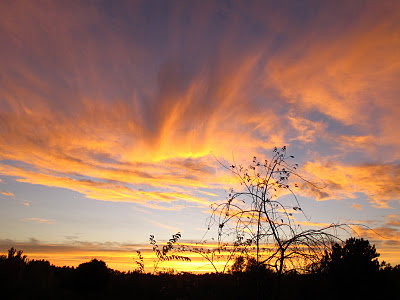The past few weeks have seen a lot of postings on various forums about Kodak dropping various films, the discontinuation of Kodak's Plus-X, good announcements on new products from Harman-Ilford, and the usual speculation about the role of film in the movie industry. With all these things in mind, maybe it is time to list them and provide some good links and commentary about the roller coaster we have been on the past few months.

A shot from a few years ago, with many expired films!
The Good and Bad (you decide)
Kodak's new Portra 400. Fine-grained, superb latitude -- maybe the best C-41 color film ever.
Pushing Portra: from the folks at the Film Photography Podcast
Useful reviews:
photomfa
rebophotography
figitalrevolution
twinlenslife
A new pinhole camera from Harman, with a DIRECT POSITIVE paper from Ilford. I really want to buy some of that 4x5 positive paper as soon as it is in stock. Nice video review here.
Kodak's discontinuation of Plus-X -- a great summation of this by my friend Ross Orr on his blog.
To be honest, Plus-X was never my "favorite," and in medium format, I really think Verichrome Pan is the one film that I miss. However, it did offer a decent medium-speed solution and an "old-style" look. Tmax 100 is a "better" film, and uses less silver, so I can see why Kodak would drop Plus-X. If you want a good Plus-X replacement, try Ilford's FP-4+ (which I always liked better).
If you are interested in how Kodak produces its film -- this book is for you!
Digital Cinema is making inroads that will possibly eviscerate movie film sales in the coming few years. This article has some interesting information. That's on top of the fact that companies that make professional movie cameras are now stopping that... One can argue that there are likely to be a lot of used cameras available for quite a while, but the writing is on the wall for those people.
On a bright note, however, Lomography has introduced a new camera that allows you to produce short movies using conventional 35mm film - the Lomo Kino. I was at first a bit skeptical, but after seeing what some very creative people have done, I think it's a really cool, retro, and creative tool that will attract quite a bit of interest. I have to hand it to Lomography -- they do have the ability to think "different." Maybe they should buy the Kodak film business?
So, you want to try a different B&W film? ORWO sells in the USA:
$40 for 100 feet of 35mm is pretty decent. I hope someone gets a roll to test it out and post their results.
Not sure if I care about this -
Kodak is ceasing production of KODAK PROFESSIONAL ELITE Chrome 100 Film by year end 2011.
Kodak's dropping of Elitechrome doesn't matter to me. I so rarely have a reason to shoot transparency films anymore, since digital accomplishes tasks that I used to use transparency films for - macrophotography, dragonfly and other insect images, images for work, color landscape work, etc. (and obviously 90% of the former users of slide film have switched). I might use a roll from time to time in my medium-format cameras, or tungsten film to be cross-processed. Given that there are no reliable local E-6 labs, everything has to be mailed out, too. However, if you find yourself shooting transparency film, Kodak recommends suggested replacement is the E100G 135-36 or Elite Chrome 100 Extra Color / EBX 135-36.
Clarification from Kodak
Kodak isn't dropping these films -- they are just changing the packaging and how they are marketed.
T-Max 400 120, will now be sold in "propacks" of five rolls
Tri-X Pan 120 400 films will also be packaged in propacks of five rolls
Kodak's Max 400 rolls of 12 exposures will cease to be offered, with the firm choosing to only market rolls of 24 frames. These rolls will be available to purchase in packs of four in the US, and in singles and packs of three throughout the rest of the world.
BW400cn packs of three rolls will now only be sold in single packs.
Read more from the British Journal of Photography and Unique Photo.
Does any of this mean that you should be concerned with obtaining film for your cameras? No. If you have been buying your 35mm film at Walgreens or some other store, well, I have news for you. Stop that at once and purchase film from a local photography retailer (if you have one), or go online to Freestyle Camera, Adorama, B&H, Ultrafine Online, and a number of other places. Heck, go to Urban Outfitters and buy film repackaged by Lomo. You'll have many choices at these stores, and the opportunity to try some films you may never have even heard of before. What you find in the department or drug store has no bearing on what's really available out there.









































